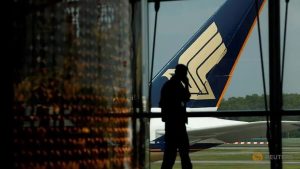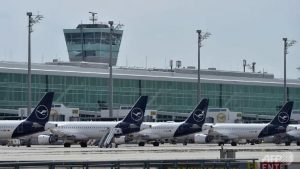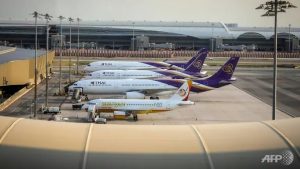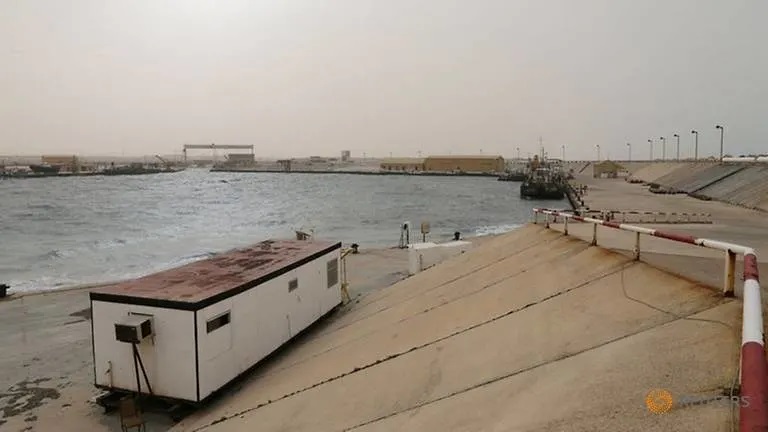The over-reliance on large aircraft is notable in Southeast Asia and the negative impact of downturns is always amplified by overcapacity, says Cesar Pereira.

FILE PHOTO: A Singapore Airlines plane sits on the tarmac at Singapore’s Changi Airport March 11, 2020.
SINGAPORE: A precise depiction of the airline industry’s recovery depends upon various factors, including duration and magnitude of the outbreak, containment measures in place, degree of passenger confidence to resume air travel, and prevailing economic conditions.
As the pandemic continues to play out, it is evident that we are living in an extremely volatile, uncertain, complex and ambiguous world. The closure of state borders in Australia between New South Wales and Victoria on Jul 7 has forced airlines to change their plans, just as domestic flying was about to ramp up.
More than a thousand flights to Beijing were cancelled in mid-June to manage a sudden coronavirus outbreak in parts of the capital.
In the near-term, airlines will be preoccupied with preserving cash, improving liquidity and getting airplanes back in the sky. Beyond that, airline decision makers must deliberate on the mid and long-term new normal with a sense of urgency.
An enhanced focus on travel safety and profitable operations will be key in reducing the impact of external factors, allowing airlines to adjust and rebound quicker.
RESTORING PASSENGER CONFIDENCE IN AIR TRAVEL
Passenger confidence plays an increasingly important role in the travel demand recovery narrative.
On Jul 7, the International Air Transport Association (IATA) released its latest public opinion research showing the willingness to travel being tempered by concerns over the risks of catching COVID-19 during air travel, be it at the airport or on board the aircraft.
Currently, most flight bookings are related to essential travel such as people returning home or to their country of work, family visits and critical business trips.

Airlines round the world have been forced to ground most of their fleets
A sizeable number of passengers who intend to travel over the next few months plan to do so for business purposes only. Leisure travel is expected to take a longer time to bounce back.
In such a scenario, even low airfares will not be sufficient to lure passengers to fly again as the fear of exposure to the virus is still rampant.
Restoring trust will need continued awareness-building about the meticulous safety measures in place at every touch point of the passenger journey – contactless procedures at airports, frequent deep-cleaning processes especially for high-contact surfaces, clean cabin air that is refreshed every two to three minutes, hospital-grade HEPA filters in the aircraft that effectively traps 99.97 per cent of contaminants as small as 0.3 microns, top to bottom air circulation and minimized contact between crew and passengers.
A GREATER FOCUS ON SUSTAINABLE AND PROFITABLE GROWTH IN THE NEW NORM?
Competition between airlines for market share and to fill up seats, especially in Asia, led to offers of low airfares for passengers in recent years. While great for the passenger, it places a strain on airline revenues.
This pattern resulted in rapid growth but meagre profits over the past years and the 2020 outlook was no different. Without considering the current unprecedented impact as part of the worst bear case scenario, IATA at the start of the year had forecasted that Asian airlines combined would report 4.7 per cent earnings margin this year, or only US$3 profit per passenger.
This is probably less than what a coffee shop makes on a cup of coffee.
Asia was the first region on the frontline exposed to the virus, so it is reasonable that many countries in the region are already witnessing a gradual capacity recovery. However, it will take much longer for air traffic to reach 2019 levels.
While capacity in countries like Indonesia, Malaysia and Thailand is gradually recovering and currently stands from 70 per cent to 80 per cent less than last year’s air service levels, demand – measured by tickets sold in June – is still 95 per cent down.
Even in countries with a sizeable domestic market such as Australia, China and Japan, traffic growth is lagging behind.
The over-reliance on large aircraft is notable in Southeast Asia and the negative impact of downturns is always amplified by overcapacity. Matching supply to demand must be at the core of business management and cannot be neglected in favour of metrics that go against the basic law of economics.

Thai Airways was already in financial trouble and the closure of borders around the world over the virus has compounded its problems
Irrespective of whether the reduced demand is transient or structural, the airline industry is inherently cyclical and its volatility poses a risk.
The shock to the system that the COVID-19 pandemic has caused, in terms of a large drop in passenger demand among other things, has presented airlines the impetus to look at right-sizing more closely.
A diverse and flexible fleet will be instrumental in helping airlines re-establish networks by optimally balancing capacity and demand. As the headwinds ease, airlines with right-sized aircraft will recover faster and stronger.
Right-sizing, now an industry buzzword, is viewed as a strategic move to recuperate from the current downturn. It has been addressed in different ways, including fleet count, aircraft utilization reduction, or the seat capacity in an aircraft.
In a simple theoretical example, a typical market served by a 230-seat aircraft with an average of 200 passengers on-board in 2019, will probably only have 100 to 120 passengers in each flight over the next few years.
As the new scenario suggests that pricing has a very limited effect on demand, this new normal would push airlines to consider a new tactical approach: Keep the aircraft size and reduce service levels, or right-size operations with a 100 to 150-seat aircraft.
Rather than complexity, multiple fleet types will be seen as an “insurance” to help airlines navigate the ever-changing environment.
The new normal might also drive greater opportunities for airlines to further develop point-to-point network: Opening up connections between more cities, without transiting through hubs, will shorten the passenger journey among other benefits.
The perception of higher virus transmission risk and increased complexities contributed by social distancing measures at major airports will likely push passengers to avoid congested hubs.
Non-stop, point-to-point operation will be preferred which is economically viable only with smaller aircraft. Everybody wins – less passenger movements at gates and inside the flight, less load on airport infrastructure, shorter travel times, and higher profitability for airlines.
Passenger experience will improve and as confidence increases, demand will recover faster.
It will also stimulate the economies in other cities and regions of a country, among other benefits.
With the unpredictability of the demand in air travel in the coming months and years, airlines with a mixed fleet strategy will have the power of flexibility, aligning capacity to demand, as and when required.

